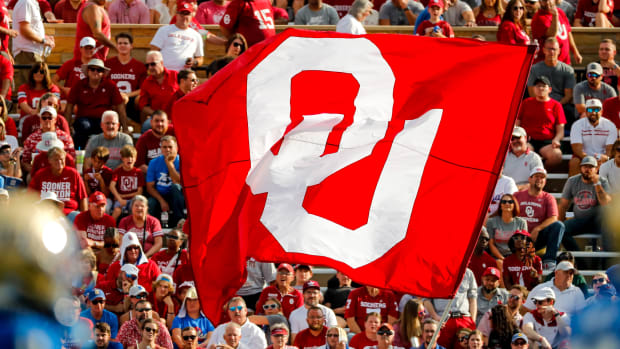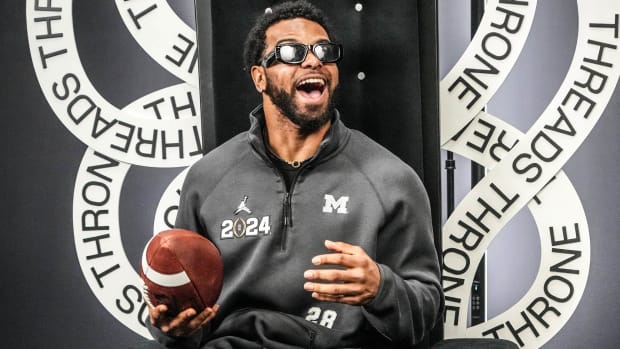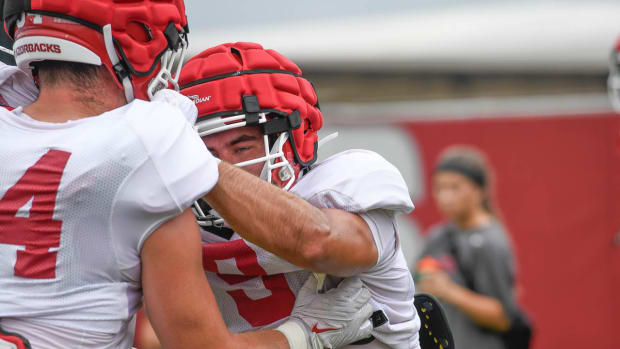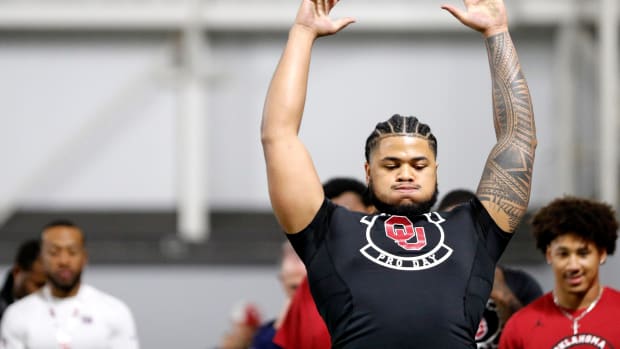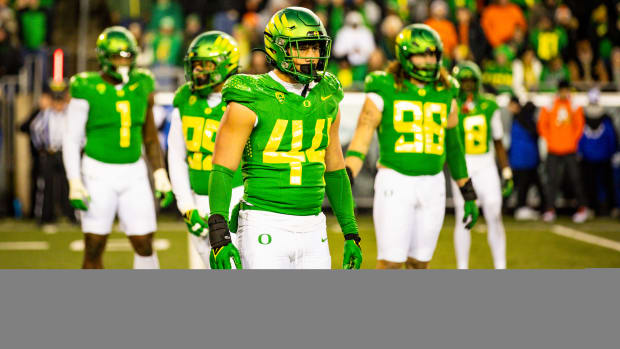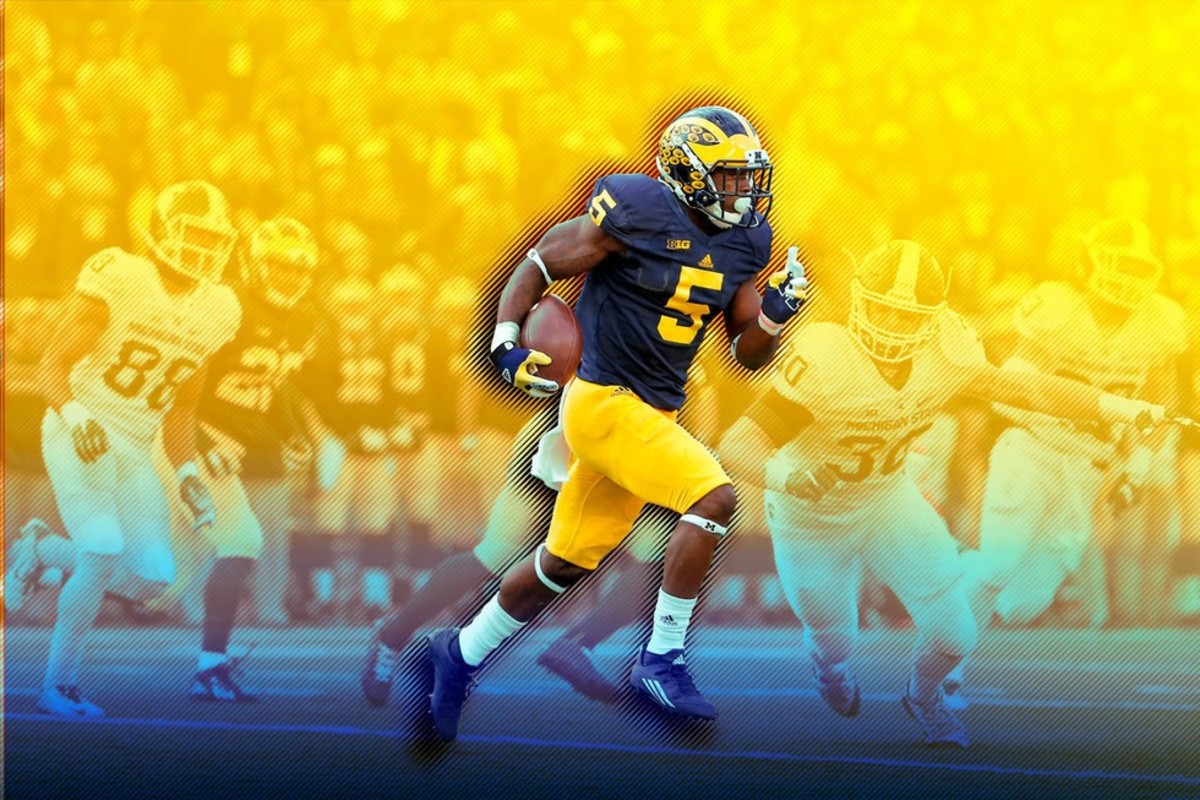
Swiss Army Men: How Jabrill Peppers, Derwin James and a new crop of defenders are changing college football
\n
This story appears in the Aug. 15, 2016 issue of Sports Illustrated. Read the rest of the college football preview and subscribe to the magazine here.
As Jim Harbaugh describes all the ways he could use Jabrill Peppers on a football field, the Michigan coach starts to sound like Forrest Gump's pal Bubba, enumerating the myriad ways to prepare shrimp.
Put him in at corner. Put him in at safety. Put him in at nickel. Put him in at linebacker. Jabrill Scampi.
He can be a returner of the punts, a returner of the kickoffs. Could probably be our best slot receiver. Would give De'Veon [Smith] and all our running backs a run for their money. Jabrill Creole.
Could be a Wildcat quarterback. Could be an outside receiver.
You get the point. There is precious little the 6' 1", 208-pound Peppers can't do on a football field. So it stands to reason that the sophomore's primary position will be one of critical strategic importance to the Wolverines—and it is, even if first-year Michigan defensive coordinator Don Brown simply calls it "Sam." That spare sobriquet commonly refers to strongside linebacker, the position Peppers will nominally play this season. But like former Michigan coordinator D.J. Durkin, now Maryland's head coach, Brown will ask Peppers to—at various times—assume the responsibilities of everyone except the defensive tackles. Peppers will fill gaps as a linebacker. He'll head down to the line of scrimmage and rush the quarterback. He'll cover receivers and tight ends. He may drop back to safety and cover a zone. He'll spy a mobile quarterback. He'll also return kicks and occasionally play tailback. But the Sam role matters most because so few can play it the way Brown wants Peppers to play it.
Since 2008, when the NCAA adopted the current clock rules and spawned an era of up-tempo offense, defensive coordinators have tried with little success to devise a system that can match up with an opponent who won't allow the defense time to substitute. The answer, it turns out, wasn't a scheme but a person. What those coordinators were seeking was a human Swiss Army knife, a player who can successfully operate on any of the defense's three levels and move effortlessly among them from play to play. With such a player on the field, a 4–3 base can morph into a 4–2–5 nickel without a single substitution or presnap move to tip off the quarterback. That 4–3 could also transform into (what appears to be) a blitzing 3–4 by walking the hybrid player to the line of scrimmage. Of course, the hybrid doesn't always have to blitz when he drops deep into the box (the area that encompasses the width of the offense's down linemen and extends about five yards beyond the line of scrimmage). He might bail and cover a receiver. Or he could come screaming off the edge faster than any defensive end or linebacker an offensive tackle has ever seen.
A player with all those attributes is indeed rare. Peppers is one of the few. So is Florida State sophomore Derwin James. So is Boston College senior Matt Milano, the x-factor of a Brown-designed defense that allowed the fewest yards per play in the nation last year and whose play Peppers studied this off-season to learn his revised role.
Stephan Savoia/AP
Milano came to the Eagles in 2013 as a 6-foot, 200-pound safety from Orlando. After his freshman season he was stuck at fourth on the secondary's depth chart. Brown suggested a move to linebacker, an idea that initially frustrated Milano. "I'm second-guessing myself," he says. "Am I ever going to get to play here?"
NIESEN: 'Everyone's looking for TV sets': Oral history of the formation of Big 12
But Brown, a longtime defensive coach who came to BC the same season as Milano, had a vision. He had created a hybrid role for linebacker Sio Moore at Connecticut in 2011–12. And Brown had already turned 225-pound linebacker Kevin Pierre-Louis, a volume tackler, into one of the Eagles' best pass rushers. In '14, Milano backed up linebacker Josh Keyes. By the time Milano took over the starting Sam spot last season, he'd bulked up to 218 pounds. Under traditional position archetypes, that would have made Milano a perfectly sized strong safety, a slightly undersized outside linebacker or a drastically undersized pass rusher. Yet he led the Eagles with 17½ tackles for loss (6½ of them sacks) while playing a position whose responsibilities varied wildly from snap to snap. "First down I might be coming off the edge," Milano says. "Second down I may be covering a slot receiver. Third down I may be acting like I'm coming, and then I'm dropping."
Hybrid players have always helped defenses exploit mismatches. Hall of Fame linebacker Lawrence Taylor used his speed off the edge to redefine the position in the NFL during the 1980s. In the '90s college coordinator Joe Lee Dunn's 3–3–5 defenses at Mississippi and New Mexico used linebacker/safety hybrids who could line up anywhere. What differentiates these new hybrids from those are their size and speed. They are smaller than players who usually rush the passer but tough enough to handle the pounding. They're also fast enough to cover slot receivers one-on-one, making them more versatile against offenses that spread the field and force defenders to tackle in space. "What's the common denominator with those guys?" asks Boston College coach Steve Addazio of Milano, Keyes and Pierre-Louis. "They could flat run. They could play man coverage on receivers and be strong in the box."
STAFF: Peppers, James among headliners on SI's Preseason All-America Team
Upon his arrival at Florida State, James proved quickly that he, too, could flat run. An early enrollee, he returned an interception for a touchdown early in the Seminoles' 2015 spring game. In the summer he was caught on video jumping over a full-grown man and besting some of his fastest teammates in a footrace. Seminoles coach Jimbo Fisher knew he had recruited a remarkable athlete, but it would take the better part of a season for the staff to understand all the things that could be done with James. Defensive coordinator Charles Kelly started by playing him at free safety, usually in a one-high look that allowed James to survey the action and use his exceptional closing speed to make a play on the ball or thump the ballcarrier. As the season progressed, James spent more time near the line of scrimmage. Against Florida last Nov. 28 he lined up outside an offensive tackle on most of the obvious passing downs and finished with nine tackles and half a sack in the Seminoles' 27–2 win.
Phelan M. Ebenhack/AP
But he didn't make a tackle on the play that generated the most buzz. On a first-and-10 near the end of the first half, James lined up just outside of 280-pound defensive end DeMarcus Walker. Florida tackle Mason Halter, expecting Walker to rush, got the 211-pound James instead, and when James rocketed off the line, he sent Halter flying. Florida quarterback Treon Harris made a nifty juke and got the pass off, but James—who had also covered Florida's receivers and tight ends in the same quarter—had served notice that he could also manhandle a 295-pound offensive lineman.
"Everybody talks about his athletic ability, which is off the charts. It's second to none," Fisher says of James. "But it's his instincts to play the game. I don't know if I've ever coached a guy that I said could play anywhere on the field. I think he could play any position."
James has had little trouble adjusting to the workload. In fact, he says he's playing fewer positions than he did at Haines City (Fla.) High, where he routinely took snaps on offense—at quarterback, running back and wide receiver—and even manned the defensive line from time to time. "I lined up at nose guard when we felt like the center was weak," James says. "I didn't just start doing this."
The data deep-divers at Pro Football Focus theorized in May that James might be the best returning defender in the nation. After breaking down all of his 719 defensive snaps last season (405 at free safety, 132 in the slot, 108 as a box safety or linebacker, 70 as an edge rusher and four at cornerback), PFF analyst Gordon McGuinness came to a conclusion similar to Fisher's. "Considering that, in theory, he should get better with age, it's terrifying to think how good he can be over the next two or three seasons in college," McGuinness wrote.
Aside from having the freakish athleticism required to rush the passer and cover receivers, Fisher points out, an up-tempo offense killer must also be smart. "Think about all the intelligence you have to have to play all those positions and not make mistakes," he says. James must know all of the Seminoles' coverages and many of their blitzes. He must also know how to react if he's lined up as an edge rusher and an offense goes against tendency and runs straight at him. So he spends time practicing with different groups. He'll work on pass-rushing moves alongside Walker and then hone his coverage skills with corner Marquez White. Seminoles coaches worked James with the second-team corners during spring practice; Fisher says James is as capable as any of Florida State's full-timers at the position.
Lance King/Getty Images
Elsewhere in the ACC, Duke coach David Cutcliffe and his staff will have to test the physical and mental limits of their hybrid players. Cutcliffe and defensive coordinator Jim Knowles spent the past three seasons crafting the "strike safety" position around 210-pound Jeremy Cash, now with the Panthers. "Jeremy was a Sam linebacker. Jeremy was a free safety. Jeremy was a strong safety," Cutcliffe says. "We'd never had that kind of versatility." Cash was a stat-sheet stuffer who in 39 games made 333 tackles, 38 tackles for loss (eight sacks) and six interceptions. His adaptability and intelligence—Cash earned a bachelor's degree in psychology and a master's in liberal studies—allowed the Blue Devils to do on defense what the up-tempo offenses did to them. Duke's defense could change formations without substituting, and it could make—and change—play calls in a fraction of the time it used to take. "I told Jim that everybody's priding themselves on no-huddle, NASCAR-fast offense," Cutcliffe says. "Let's do the same thing defensively." This season Knowles must find out how far he can stretch senior Corbin McCarthy, a 200-pounder originally recruited as a cornerback who, despite his relatively small frame, can bench-press 400 pounds.
STAPLES: Alabama's success casts long shadow over Auburn, Malzahn
If coaches can deploy their Swiss Army knives correctly, they can turn the tables on up-tempo offenses that have rendered defenses boring and predictable. Without the benefit of substitutions, defenses are limited by the personnel already on the field. They have little time to make calls and struggle to mask blitzes. This makes the quarterback's job much easier, especially on run-pass option plays that allow the QB to choose whether the play is a run or a pass. Before the snap, quarterbacks will often count the number of defenders in the box. If it's seven or more, he should probably throw. Less than seven, he should allow the tailback to take the ball when he stuffs it in his belly at the beginning of the play. But what happens when Florida State's James lines up as an edge rusher and then, instead of chasing the quarterback, shadows the tight end in coverage? That bit of deception alters the count. James might be the seventh man in the box, but he isn't coming for the passer. That forces the quarterback to make a split-second decision: Throw into heavy coverage, or throw with a potential fourth rusher coming from an unknown location. Either way, his job just became much more difficult.
"The thing I compare that to is us having two running backs in the backfield and being able to motion them out and have them go catch the ball," Oklahoma quarterback Baker Mayfield says. "It's a personnel and a formation issue. If you have a guy like [the Seahawks'] Kam Chancellor who can play linebacker, who can stand up as a defensive end or go play safety, you don't know what kind of defense they're in." That's why Mayfield is glad this particular brand of hybrid remains scarce: "They can mix up your defense and make it so much better. You're not predictable when you have a guy like that."
HAMILTON: After missing 2015, Clemson WR Williams ready for spotlight
In Ann Arbor, Brown keeps devising more ways to use Peppers. When he took the Michigan job last December, Brown broke down video of the Wolverines' 2015 season to determine how best to use the players he inherited. He noticed that while Peppers played safety in Durkin's defense, Durkin hadn't used Peppers much differently than Brown had used Milano. As he watched the five-star recruit, quite possibly Michigan's best athlete since Charles Woodson, Brown let his imagination run wild. "We've got to give this guy a bunch of jobs," he remembers thinking.
Peppers will take whatever Brown dreams up. "It's not really a new position," Peppers says. "Just in his defense the nickel plays more like a linebacker. But I'm definitely in the box a lot more, and I'm blitzing a lot more. I guess he's just trying to get me around the ball, let my instinct and awareness take over." So does that mean he plans to lead the Wolverines—or perhaps the Big Ten—in sacks? "My only stat is more wins than losses," Peppers says. "Preferably no losses."



